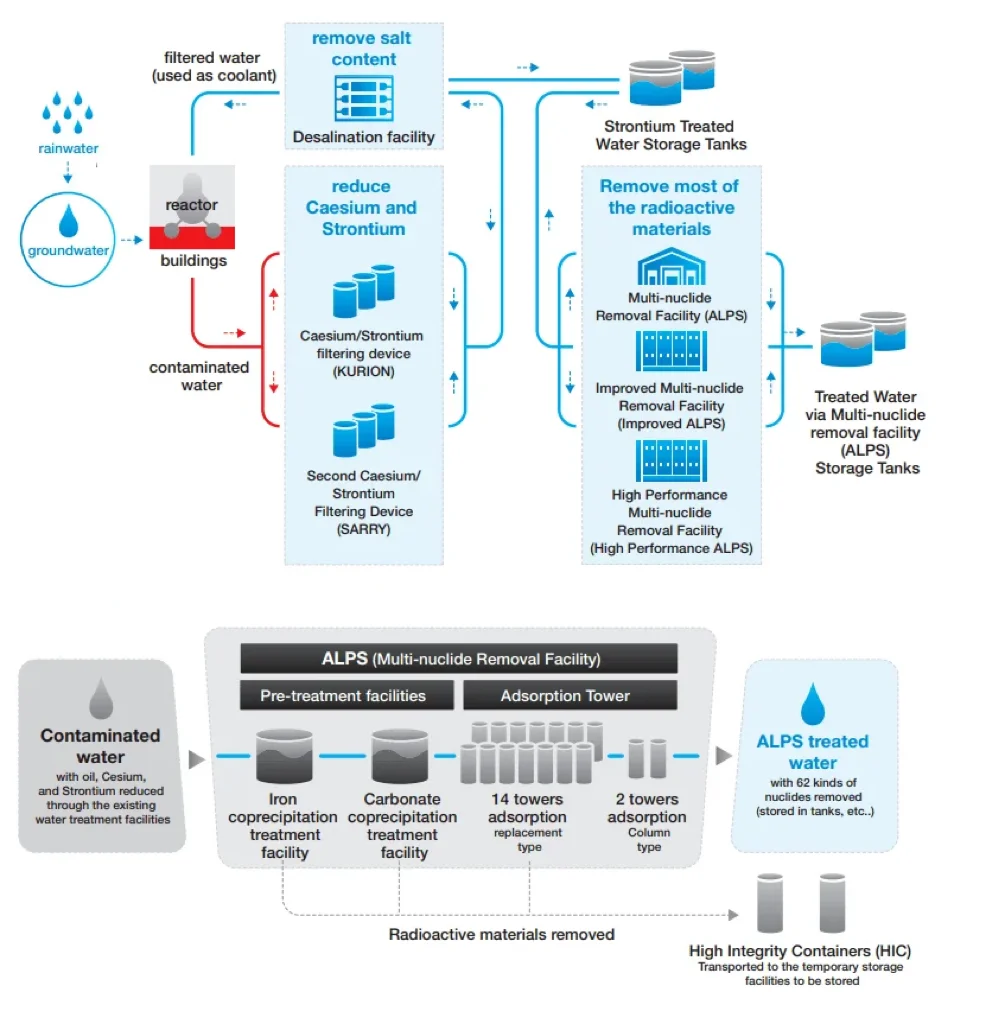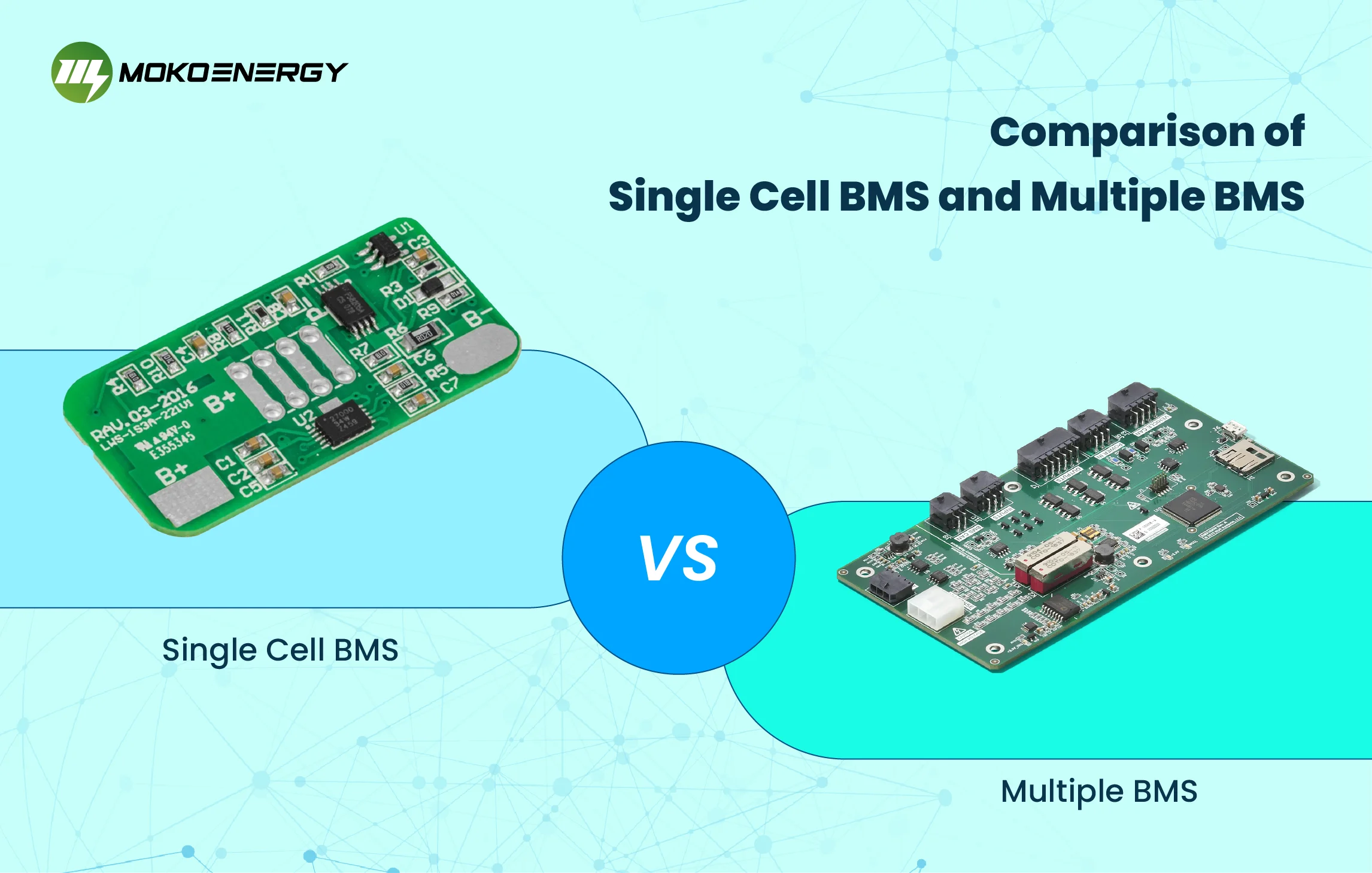Starting from August 25, 2023, Japan initiated the discharge of nuclear-contaminated water into the Pacific Ocean, triggering global attention and protests. This action might resulted in the release of 64 radioactive substances, including highly radioactive tritium and carbon-14, in the nuclear-contaminated water. If the Japan Nuclear Contaminated Water Discharge is not managed effectively, then many of these radioactive compounds will result in endangering both people and the environment. Although MOKOEnergy, a manufacturer of battery protection boards in China, is not engaging in direct opposition to this event, we are closely monitoring its progress. We don’t know how this thing will take us, but we insist on being a responsible steward of environmental responsibility in the manufacturing process of battery protection boards. At the same time, we encourage all businesses to promote global sustainable development while promoting economic prosperity.
Distinguishing Nuclear Waste Water and Nuclear Contaminated Water
Before delving into the Japan Nuclear Wastewater Discharge, it is necessary to clarify the difference between “nuclear contaminated water” and “nuclear wastewater.” Nuclear power plants located next to bodies of water discharge “nuclear power wastewater” into the immediate environment, which is a routine practice. However, this designated nuclear waste water primarily constitutes cooling water for the power plant, devoid of contact with the reactor core and free from radioactive materials. While the direct discharge of these waters does pose certain environmental risks, they primarily involve warmer water temperatures and their harmful effects on local Marine ecosystems. In contrast, the matter at hand involves the discharge of over 1.2 million tons of “Japan nuclear wastewater,” which is fundamentally distinct. The water is contaminated due to interactions with the reactor core, which contains radioactive materials. Such a scenario is not analogous to the cooling water used in conventional nuclear power plants. The staggering volume involved, reaching into the millions of tons, has engendered strong resistance both domestically and internationally.
Why Japan Discharges Nuclear Contaminated Water into the Pacific?
Post the Fukushima nuclear catastrophe, a continual inflow of cooling water is necessitated to counteract the persistent release of residual heat from the reactor cores.
In the aftermath of the disaster, the reactor cores were damaged and compromised, causing large amounts of radioactive material to leak into the environment and increasing the contamination of the surrounding area. Owing to the geographical characteristics of the Fukushima Daiichi Nuclear Power Plant’s location, a continuous influx of groundwater and rainwater has surged into the area, further augmenting the volume of nuclear plant wastewater. This primarily accounts for the origin of the nuclear polluted water. The crux of the problem is that the state of the reactive substances cannot be effectively managed at present, so they must be sealed inside the storage tank. This reality is reflected in the proliferation of reservoirs along the Fukushima coast. Regrettably, each of these tanks is limited to accommodating 1000-1300 tons of radioactive water. Japan’s sense of urgency to discharge nuclear-contaminated water into the sea stems from the constraints imposed by these tanks’ capacity, juxtaposed with the escalating daily accumulation of contaminated water.
How does Japan dispose of nuclear water?
For Nuclear Wastewater treatment, Japan relies on devices such as the Advanced Liquid Processing System (ALPS) for purification. This system can cleanse the water of 62 radioactive substances, excluding tritium, to levels compliant with Japan’s environmental discharge standards. Nevertheless, owing to limitations inherent in the equipment, a portion of the treated water still falls short of these standards. In addition, the ALPS system coped with repeated failures. Notably, data acquired by a South Korean delegation during a visit to the Fukushima Daiichi Nuclear Power Plant in May underscored that the ALPS system encountered 8 instances of malfunction between 2013 and 2022. Given the substantial quantity of nuclear-contaminated water in Japan’s possession, amounting to as much as 1.3 million tons, with a 30-year timeline earmarked for its fukushima wastewater release, concerns have emerged over Japan’s ability to effectively manage the nuclear power plant water discharge, execute vigilant monitoring, and ensure responsible handling.
How does Japan plan to discharge nuclear wastewater?
The Japanese government has sanctioned a multi-decade plan encompassing the release of water treated by the ALPS system into the Pacific Ocean. This initiative comprises several sequential phases. Firstly, seawater will be utilized to dilute the water, thereby diminishing tritium concentration per droplet. Officials assert that they will meticulously ensure that tritium levels remain well below all safety thresholds and even lower than the quantities released by certain operational nuclear power plants. Subsequently, the diluted water will traverse an underwater conduit, culminating at a location proximate to the Fukushima coastline within the Pacific Ocean. The final step is to further dilute the water. Ultimately, the discharge process will be a gradual one, taking decades to fully empty the containment vessel.

The hazards of Japan’s discharge of nuclear sewage
Severe Ecological Impacts
The discharge of nuclear-contaminated water has had a profound ecological impact, causing alarm among experts and the public. Radioactive isotopes, contaminants and contaminants present in discharge water have the potential to cause significant damage to Marine ecosystems. Delicate equilibrium within aquatic life systems could be disrupted, food chains compromised, and coastal ecosystems subject to enduring degradation. In addition, concerns have been raised about the potential long-term consequences for human health of the consumption of contaminated seafood.
Ongoing health hazards
The consequences of Japan’s Nuclear Wastewater release extend beyond Marine life. Water contaminated with radioactive elements seeps into groundwater sources and can have profound effects on drinking water supplies. The ongoing health risks associated with prolonged exposure to radioactive materials pose a daunting reality, as they can trigger a range of serious health problems, including cancer, birth defects, and genetic mutations. The indiscriminate spread of these pollutants requires immediate attention. In 2019, the Woods Hole Oceanographic Institution in the United States highlighted that the nuclear contaminated water at Fukushima still contains radioactive elements such as iodine-129, strontium-90, tritium, ruthenium-106 and carbon-14. Upon absorption into the human body, these radioactive substances are distributed throughout organs and tissues via the circulatory system. When a certain dose is reached, radiation-induced damage can ensue, endangering overall health. Iodine-129 could precipitate thyroid cancer; strontium-90, categorized by WHO as a Group 1 carcinogen, serves as a primary contributor to leukemia; tritium, an exceptionally persistent isotope, is associated with genetic mutations; and carbon-14, existing in fish at concentrations 50,000 times higher than baseline, could lead to genetic deterioration.
Global Environmental Implications
Japan’s resolution carries environmental implications that transcend national boundaries. Ocean currents possess the potential to transport radioactive pollutants to distant shores, impacting international waters and coastal communities across the globe. This situation underscores the interconnectedness of the planet’s oceans, necessitating collaborative endeavors within the international community to address and mitigate these hazards. Calculations derived from a German marine science research institute suggest that within 57 days of commencement, radioactive materials from Fukushima’s nuclear-contaminated water will propagate across a substantial expanse of the Pacific Ocean. Following three years, the repercussions of nuclear pollution could be felt by the United States and Canada, with global dissemination over a decade.
Within China’s mainland region, coastal areas are theoretically exposed to comparatively minimal impacts. This can be attributed to the discharge point, Fukushima, being situated on Japan’s eastern coast and at the terminal point of the Kuroshio Current. As a result, the nuclear-contaminated water would follow the trajectory of ocean currents in the North Pacific before eventually reaching the vicinity of Taiwan. Moreover, China’s internal river systems deposit water resources along the mainland’s coast, forming a natural barrier against the unimpeded dispersion of pollutants.
How do we incorporate environmental awareness in the manufacturing of battery protection boards?
Given the gravity of Japan’s discharge of nuclear-contaminated water, MOKOEnergy is resolutely dedicated to mitigating environmental risks within our manufacturing processes.
Sustainable Approaches
Battery protection boards stand as guardians of sustainable energy storage. By forestalling battery overcharging and over-discharging, our products significantly prolong battery lifetimes, reducing the necessity for frequent replacements and curtailing electronic waste. We leverage resources efficiently, reducing material requirements while concurrently alleviating the environmental strain linked to manufacturing.
Collaboration with Environmentally-Minded Enterprises
We actively collaborate with industry pacesetters to seamlessly integrate our battery protection solutions across diverse applications. By amplifying battery performance and longevity, we fortify technologies such as renewable energy systems and electric vehicles.
Transparent Manufacturing Practices
From product design to production processes, our environmental responsibility forms the basis of every decision we make.
In Conclusion: Cultivating a Sustainable Future
With regard to Japan’s discharge of nuclear sewage, we are soberly aware that mankind must strike a balance between progress and environmental protection. We perpetually interweave technological innovation with ecological mindfulness, collaborating earnestly to achieve sustainable development and a future characterized by environmental stewardship. If you are considering the procurement of battery protection boards and BMS solutions, we extend a warm invitation for you to connect with us.






